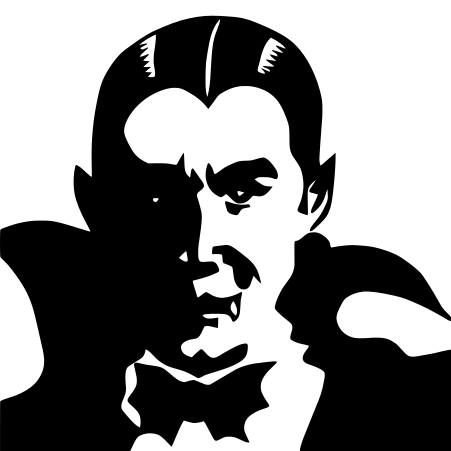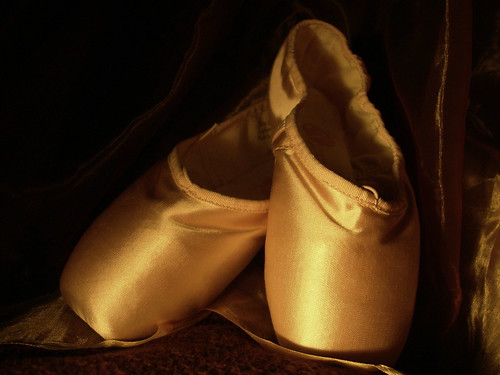How good is Bram Stoker's novel Dracula? So good, kids are still dressing up like his main character more than 100 years later. The novel was originally written in 1897, but it's come to life many times since then.
The Book
We're celebrating scary books this October, but
Dracula is about a lot more than cheap thrills. The book touches upon the role of women in Victorian society, sex, even immigration (still a hot-button issue in some countries). Bram Stoker wasn't the very first author to write about vampires, but he's famous for bringing the vampire into the modern world.
It's one of the most-adapted novels ever written. It's been around long enough to be adapted for the stage and the screen many, many times over. Dracula centers around a title character who is quite thoroughly undead, though many protagonists help to tell the story through diaries, letters, newspaper clippings and ship logs.
Dracula is the title character and the villain. Jonathan Harker is the hero. He's going to Dracula's castle in the Carpathian Mountains, and considering the year he's traveling by train. Harker is an Englishman and quite the upstanding, proper young man. A lawyer, Harker is going to meet with Count Dracula regarding the sale of some real estate. He becomes a prisoner in the castle, and begins to notice some rather odd things about the Count.
Later, a ship runs aground at Varna. The log reveals a strange set of circumstances on board, perhaps perpetrated by the mysterious dog that reportedly leapt ashore. The ship comes from Transylvania, near Count Dracula's castle.
Elsewhere, Dracula locates Harker's fiancee Mina Murray and her friend Lucy. Lucy is vivacious and pretty, and so popular that she receives multiple marriage proposals in a single day. Lucy finally accepts Holmwood. But strangely, she falls ill. Lucy loses weight dramatically, and one of her suitors calls in a professor he knows, Van Helsing. Van Helsing examines Lucy and knows just what's wrong with her, but won't tell the others. When blood transfusions do not work to cure her, Van Helsing leaves to do more research. Lucy and her mother are attacked by a wolf, and both apparently die in the onslaught.
When rumors of a mysterious woman terrorizing children in the night surface, Van Helsing reveals the truth to the others: Lucy is a vampire. He rounds up a crew, and they go to track her down. Lucy's head is chopped off, her heart staked and her mouth stuffed with garlic.
Dracula doesn't like the looks of this vampire-hunting crew at all, especially when Harker and his new wife Mina join in on the frenzy. He visits her and feeds her his own blood, creating a bond with her. The two begin to communicate telepathically. Still, Dracula has to flee back to his castle. Now, Van Helsing has caught on to Mina's strangeness and he's taken to hypnotizing her.
The crew finally collapses on the count's castle and kill him. When Dracula crumbles to ash, Mina is free. The couple lives happily ever after in the final pages of the book, a pretty tame ending for an otherwise exciting story.
Victorian readers, Stoker's peers, didn't widely love the book. It was much less popular than gothic and horror novels written by his contemporaries (like Mary Shelley), but became incredibly popular among more modern readers.
Of course, all the adaptations didn't hurt.
The Films
Stoker wrote the very first adaptation of his work, which played at the Lyceum Theater in London. Movie versions were made in the 20s, in the 30s, in the 50s, in the 90s, about 8 years ago...so far, there are around 217 films based on the book.
But the definitive Dracula was re-told on film in 1931 starring the incomparable Bela Lugosi, heralded as one of the greatest horror actors. This version greatly expands on the role of the background character Renfield, no one knows why, who becomes something of a slave to Dracula. Renfield assumes all of Jonathan Harker's early duties in the story, and becomes the lawyer who travels to the castle in Harker's stead. Harker is merely Mina's fiancee, whom Dracula meets when he makes it to London. Lucy dies a much more respectable death this time around, and Renfield has become a raving lunatic.
Van Helsing appears again to lead the mob against Dracula. There are numerous attacks and added scenes revolving around Renfield, though Lucy does wake up and terrorize the neighborhood kids like she's supposed to. Dracula is killed in his coffin by Van Helsing and Harker, who ends up taking his lady love off to safety once more.
Two scenes were cut from the 1931 film because the Production Code of the day wouldn't allow them. One was an epilogue in which Van Helsing appears to give the audience a final fight. The scene has since been lost.
Another truly great version of the story wouldn't be made until 1992. Gary Oldman plays Dracula this time, while Winona Ryder becomes Mina. Anthony Hopkins is vampire killer Van Helsing, and Keanu Reeves is Jonathan Harker. This version rather faithfully follows the original book, though it does add a love element between Mina and Dracula and more clearly emphasizes the link between Count Dracula and Vlad the Impaler, Stoker's original inspiration for the character.
What Got Adapted?
In the book, Dracula seeks out Mina with no good intention. In the 1992 film of the same name, he's chasing Mina because he loves her. On film, the count has a former wife who killed herself, and this was not the case in the novel. In the book, Mina is very much opposed to Dracula and very engaged in hunting him down and killing him. In some circles, she's even considered to be a contemporary take on the classic Victorian female -- ahead of her time. In the book, Mina is reduced to a somewhat lovestruck little girl who attempts to save Dracula's life. Nor is Dracula the type of guy who would win a lady's heart in the novel. He's a villain through and thought in the book, and it's all rather black and white. The book Dracula would have killed her without flinching.
But the story is still pretty good, whether you read the original 1897 version or enjoy one of the films made way later. Dracula is still one of the most iconic villains ever created, and vampires are still a mainstay of fiction. You have Bram Stoker to thank for it.































